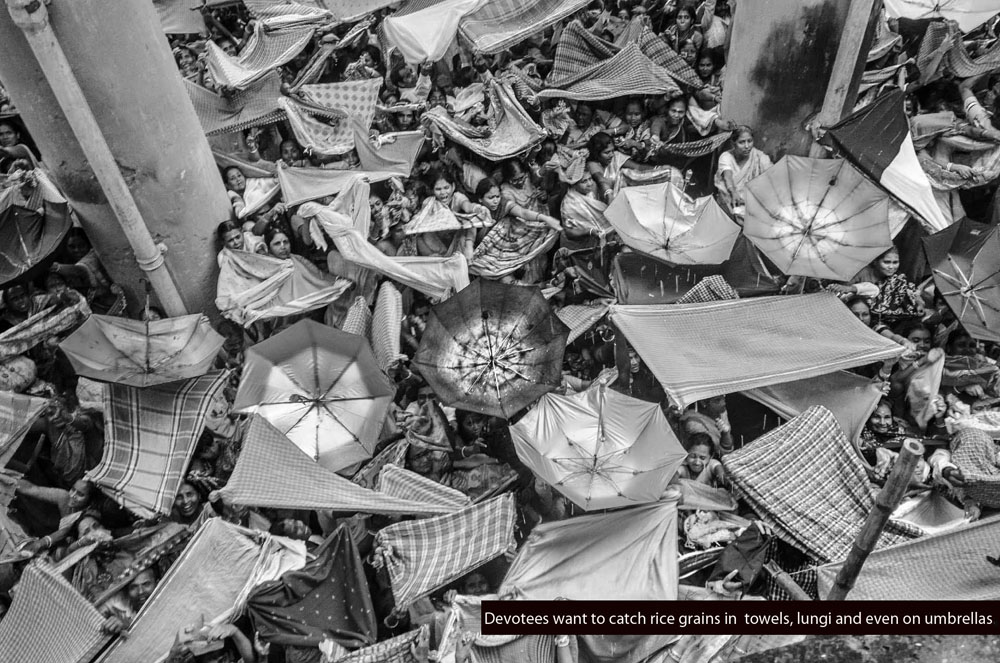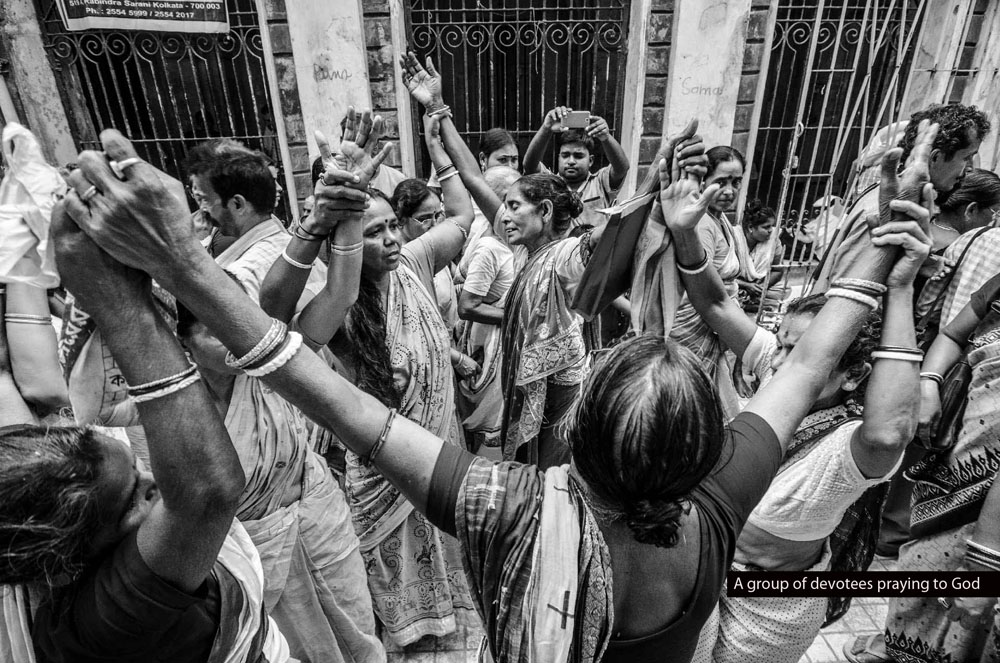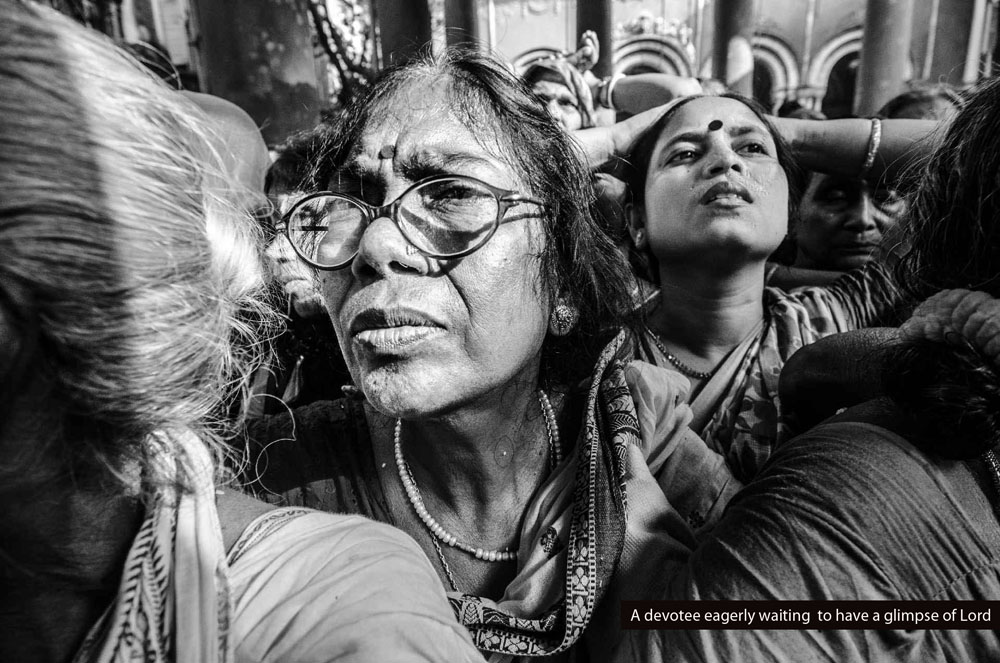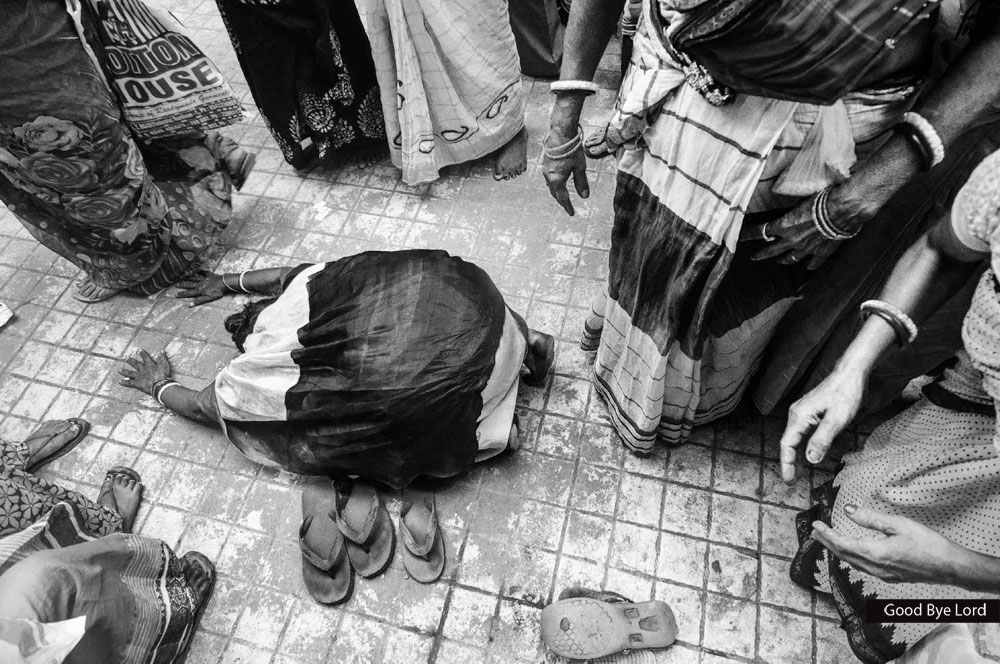Bengal might be covered in lush green foliage but its past is peppered with catastrophic famines. By the end of 18th century, millions of people had died of hunger. The Great Famine of 1943 alone had taken thousands of lives. In these trying times, cults like that of Madan Mohan (a form of Lord Krishna and the reigning deity of the Gokul Chandra Mitra’s Rajbari at Kumartuli) became a form of hope.
Every year in Annakut, newly harvested rice is offered to Madan Mohan. After a puja, the Mitras of the Rajbari fling holy rice towards all the gathered devotees who struggle to collect as much prasad as possible. For the devotees, the grains embody the blessings of Madan Mohanji and they belief that their families will not suffer from hunger, famine and other calamities if they amass enough rice grains.
Every year just after Diwali, thousands of devotees across the Bengal gather in this iconic building (famously known as Black pagoda Building), often lodging overnight outside the rajbari. On the day of the festival, the temple’s portico looks like a fairground with a gamut of emotions. The festival breathes life into this sleepy area of old Calcutta which, for a few hours, turns into a riot of celebrations.
Scripted by Ritanyan Mukherjee and Hardika Dayalani, this photo essay tries to capture the devouts as they revel in the chaos.













